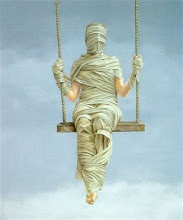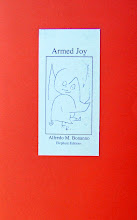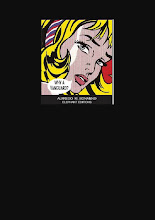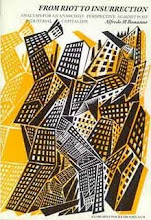Original title: Il rifiuto delle armi, ‘ProvocAzione’ no.10, January 1988, p.10
The ‘refusal’ of arms is an implicit in antimilitarism. But this concept is taken for granted and is hardly ever gone into in any depth.
Being precise objects, weapons are certainly the fundamental instruments that not only the army as an organisation (which would not make sense if it were unarmed), but also the military mentality (which has derived a series of authoritarian deformations from the use of weapons) is based on.
This is so. Armies have always been armed, and have created a particular form of hierarchical organisation with a fixed, rigid level of command precisely because the use of weapons is—or at least is believed to be—rigid and must obey precise rules. The same goes for the mentality. The ‘armed’ individual feels different, more aggressive, and (apparently) more easily overcomes the frustrations that everyone has in them, so ends up becoming overbearing and cowardly at the same time.
But militarism cannot, even in its own opinion, make an ‘optimal’ use of weapons. It must insert their possible use within the political and social context of an unstable equilibrium, both nationally and internationally. At the present time a purely ‘militaristic’ use of arms would be inconceivable. That leads those who carry weapons, as well as their bosses and the arms producers, to developing an ideology of defence with which to cover not only their use but also their production and perfectionment in the negative sense.
When antimilitarists limit themselves to simple declarations of principle, weapons remain something symbolic, i.e. they remain the abstract symbols of destruction and death. On the contrary, if antimilitarism were to go forward concretely and open up the road to liberation in the material sense, then it would not be able to limit itself to a symbolic refusal of arms, but would have to go into the problem more deeply.
In fact weapons, being objects, are considered differently according to the point of view they are being looked at from. That goes for anything, and weapons are no exception. This is not a relativist conception, it is a simple materialist principle. Arms as inert objects do not exist. What do exist are arms in action, i.e. that are used (or waiting to be used) in a given perspective. That is so for all things if we think about it. We tend to imagine things cut off from their historical and material context, as though they were something abstract. But if that were so they would become meaningless, reduced to the impotence we would like to reduce them to in the case of weapons. In fact things are always ‘things in action’. Behind the thing there is always the individual, the individual who acts, plans, uses means to attain ends.
There is no such thing as an abstract weapon (taken as an isolated object), therefore. What do exist are weapons that the army uses in its projects for action. These are given a specific investiture as instruments for the ‘defence of the homeland’, ‘maintaining order’, ‘the destruction of the infidels’, ‘the conquest of territory’, etc. The soldier is therefore in possession of a vast outfit of ideologies or value models, which he acts out when he uses weapons. When he shoots he feels, according to the circumstances, defender of the homeland, builder of the social order, destroyer of the infidels, engineer of social territory, etc. The more his role corresponds to that of the crude executioner, the more he is at the mercy of the fabricators of ideology and capitalist rule, the more the weapons he bears become blind instruments of oppression and death. Even if he were to lay them down they would still be objects within a general framework that qualifies them as instruments of death.
Now, if the project is different, if the aim of the action is different, the significance of the weapon changes. As a means, it can never be absolved of its limitations as an object with which it is possible to procure damage and destruction with a certain ease (which is what distinguishes the object ‘weapon’ from other objects many of which can also become such when necessary). We are not trying to say that the end—liberation, the revolution, anarchy or whatever other liberatory, egalitarian dream—justifies the means, but it can transform weapons into different ‘objects in action’. And this different object in action also comes to be a part of the antimilitarist struggle, even although to all effects it remains a weapon.
In a project of liberation, behind the weapon lies the desire to free ourselves from our rulers and make them pay for the damage they are responsible for. There is class hatred, that of the exploited against the exploiters, there is the concrete material difference of those who continually suffer offence to their dignity and want to wipe out those responsible.
That is all radically different to any ideological chatter about order and defence of the homeland.
skip to main |
skip to sidebar

Some writings of Alfredo Maria Bonanno in English, or almost

Alfredo Bonanno was arrested on October 1st 2009 in Greece, accused of concourse in robbery. With him, anarchist comrade Christos Stratigopoulos.
Here are a few translations and part translations of a small portion of Alfredo's writing. This is a work in progress, many of the translations are as yet incomplete. Open links to find more of Alfredo's work.
Alfredo Bonnano Released
Nov. 22 Alfredo Bonnano was sentenced to 4 years imprisonment (which practically means that with the time served so far and the fact that he is over 70years old HE IS RELEASED
Christos Stratigopoulos (who took responsibility for the action)
was sentenced to 8 years and 9 months with the Greek law will probably be released at the end 2011
BY ANY MEANS NECESSARY
LINKS
click on any of these labels to read text
- "Community" sickness
- 1981 - Editorial
- A Critique of Syndicalist Methods
- A few notes on Sacco and Vanzetti
- A few notes on the revolutionary movement in Italy
- A little man in Singapore
- A million jobs
- A question of class
- Affinity
- After Marx autonomy
- Albania Laboratory of Subversion (Introduction)
- Anarchism and the national liberation struggle
- Anarchists and action
- AND WE WILL ALWAYS BE READY TO STORM THE HEAVENS AGAIN (Against amnesty)
- ANTI-INSTITUTIONAL MOVEMENT
- Are we modern?
- Armed Joy
- ARMED STRUGGLE. SOME REFLECTIONS.
- Autonomous base nuclei
- beyond syndicalism
- Beyond workerism
- But what is the imaginary?
- Class War
- Comiso - Organizational document of the self-managed leagues
- Considerations on illegality
- Dissonances (Introduction)
- Elephant Editions 1986
- Excluded and included
- Farewell to claiming
- Feral Revolution (Introduction)
- FICTITIOUS MOVEMENT AND REAL MOVEMENT
- For an Antiauthoritarian Insurrectionist International - Proposal for a debate
- From riot to insurrection
- From the centre to the periphery
- Good technology
- Guerilla Extraordinary
- Habits and idols
- Hegel
- I know who killed chief superintendent Luigi Calabresi
- Illegality
- Illness and capital
- Informal organisation
- Insurrection
- Internationalism
- Introduction to Sabate
- Introduction to Anarchism and Violence
- Introduction to Bratach Dubh English edition of Malatesta's Fra Contadini
- Introduction to Insurrectionalist Anarchism
- Introduction to Strange Victories
- Introduction to The Conquest of Bread
- Involuntary aspects of voluntary work
- Let's destroy work
- LET'S DESTROY WORK. New introduction
- Let's keep our feet on the ground please
- Lightening Conductors and Stand-ins - more shots of non-news
- Lightning Conductors and Stand-ins
- Lightning Conductors and Stand-ins (cont.)
- Locked up
- Looking forward to self-management
- Loss of language
- More on internationalism
- National Liberation Struggle
- nineteen years on
- No more crises
- Non-news about drugs
- Non-news about racism
- Ode to the Uniform
- On Feminism
- One's life on the line
- Order and chaos
- Otto Ruhle (Introductory Note)
- OUR ROLE IN THE PRESENT CONFLICT
- Palestine mon amour
- Pantagruel anarchist review
- Pinelli
- Prison and Prisoners’ Struggles - Introduction
- Propulsive Utopia
- Quality and the factory
- Restructuring Capital and the new democracy
- Revolution - Violence - Antiauthoritarianism
- REVOLUTIONARY VIOLENCE
- Science and the social revolution
- Self-management
- Severino Di Giovanni in Argentina 1923-1931 by Osvaldo Bayer
- Social banditry
- SOME NOTES -
- Space and Capital
- Stirner
- Stop the City? From information to attack
- Strategy and Methods
- Streamlined production
- The "end" of the crisis
- The aesthetics of anarchism
- The anarchist tension
- The area of autonomy and the anarchist movement in Italy
- The armed wing of science
- The Cruise missile base at Comiso can be prevented
- The ethical bank
- The insurrectional project
- THE LANGUAGE OF TECNICS -
- The logic of insurrection
- The moral split
- THE NECESSARY DESTRUCTION -
- The priority of practice
- The refusal of arms
- The revolutionary project
- The revolutionary struggle
- The significance of an insignificant event
- The struggle for self-managed social space
- The tyranny of weakness
- The whole and the part
- The young in a post industrial society
- Theory and action
- Towards anarchist antimilitarism
- TOWARDS THE GENERALISATION OF ARMED STRUGGLE
- TRANSFORMATION IN THE WORLD OF WORK AND SCHOOL -
- TRUTH -
- Unemployment in Italy - How come everything doesn't explode?
- Untitled
- Violence and non-violence
- What are anarchists
- What can we do with anti-fascism?
- Why a vanguard?
- Why Insurrection
- World domination in a few words











